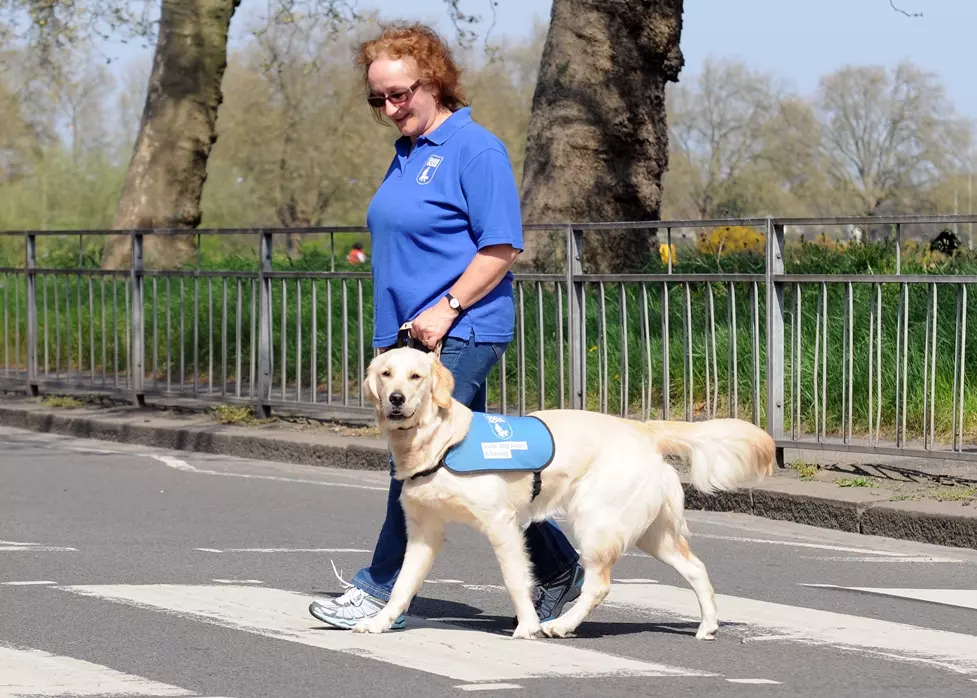How to Treat Blind People Adequately – And Other Etiquette Tips – OrCam
2015-08-20 | By Orcam Staff

Imagine that you are walking down the street when someone calls out your name. You stop and look towards the voice but instead of seeing a face all you can make out is a grayish shadow.
“Jen, it’s so great to see you again,” the shadow declares enthusiastically. “It’s been so long since we last ran into each other.”
The voice sounds vaguely familiar but you can’t quite place the person that it belongs to. Is it a family friend? A business acquaintance? Your first-grade teacher?
You’re clearly heading towards an awkward situation here unless you can dispel it with a lighthearted reminder about your visual impairment ( “You know that I can’t see you, haha”) or pull off a quick getaway (“gotta rush- would love to talk with you another time”). Or if you’re in the mood for a challenge you can deploy your detective skills to reveal the shadow’s identity with some subtly probing questioning (“Wow, so how long has it been…?”).
But really, why should you have to go through all of this work? Wouldn’t it be a lot easier if the person had simply identified themselves as soon as they approached you?
When your eyes view the world through a pinhole or a shadowy blur, such encounters happen all too often. Friends and well-meaning acquaintances may not realize how confusing their words or actions can be to those who rely on verbal cues instead of vision.
One way to help avoid the discomfort of such incidents is by making our fully-sighted friends aware of what they can do differently to make future encounters more comfortable for everyone.
How to Treat Blind People Adequately
Here are seven etiquette tips that everyone should be aware of when encountering someone who is vision impaired or blind:
1. Chance encounters: When you run into someone on the street, or in a professional setting, who you know may have trouble seeing you, start off by identifying yourself. This will help avoid the discomfort of them having to guess who you are. If you are accompanied by another person, introduce them. If you are walking your dog, introduce him too.
2. Stand close enough to be recognized: If you approach a friend who is wearing an OrCam device, make sure to come close enough to them so that the OrCam can recognize and identify you to the wearer. That would be about a three to five foot distance.
3. Don’t bother the guide dog: If you’re a dog lover it can be hard to resist bending down for a bit of petting with an animal as lovely and intelligent as a guide dog, but resist you must. When you encounter someone who is accompanied by a guide dog you should never pet or feed the dog without explicit permission from their owner. It can be very dangerous for a blind or visually impaired person if the dog they rely on for their safety is distracted by food or a good massage. When a guide dog is on the job they are not to be bothered.
4. Conversing: Unless you have any reason to think this person may have trouble hearing you, speak in a normal tone of voice. No one appreciates being yelled at and a visual disability does not mean there is anything wrong with a person’s hearing.
5. To Shake or not to shake? You have greeted your acquaintance and identified yourself, but now you’re not sure what the protocol is for shaking their hand. The best thing to do is to take your cue from the person you are speaking with. Most blind or visually impaired people will put out their hand for you to shake, at which point you can respond in kind. Alternatively, you can also ask them if it would be OK to shake their hand. What you should never do is grab a person’s hand, or any other part of their body, without permission. Though that’s a pretty hard- and-fast rule applies to pretty much everyone.
6. More Verbage: During conversations keep in mind that the person you are speaking with may not be able to see your facial expressions or gestures. Your joke might not seem as funny without the grimace at the end, so don’t take offense if you don’t receive the expected laughter. Do make an effort to express yourself better verbally. Vague directions such as “here” or “over there” will be unhelpful to someone that can’t see what’s “over there,” but specific details or descriptions will be appreciated.
7. Say Goodbye: Before walking away be sure to let the person you are speaking with know that you are leaving. This probably seems obvious if you are involved in a one-on-one conversation with a friend, but the same goes for when you participate in a discussion that involves several people, including an individual who may not be able to see you leave the group. A gentle touch on their wrist and a short goodbye is enough to let them know that you are leaving, and will save them from the possible embarrassment of engaging in conversation with someone that isn’t there.
With all of that said, the most important point to remember is that people who are blind or vision impaired should be treated the same as anyone else. While it may be OK to ask a person who is blind or vision impaired about their vision, don’t be tiresome. Their low vision is only a small part of who they are and they probably have many other interests and hobbies that they’d love to speak with you about. So feel free to chat and discover what you might have in common, and always remember the best way to treat blind people is to treat them as you treat anyone else.



